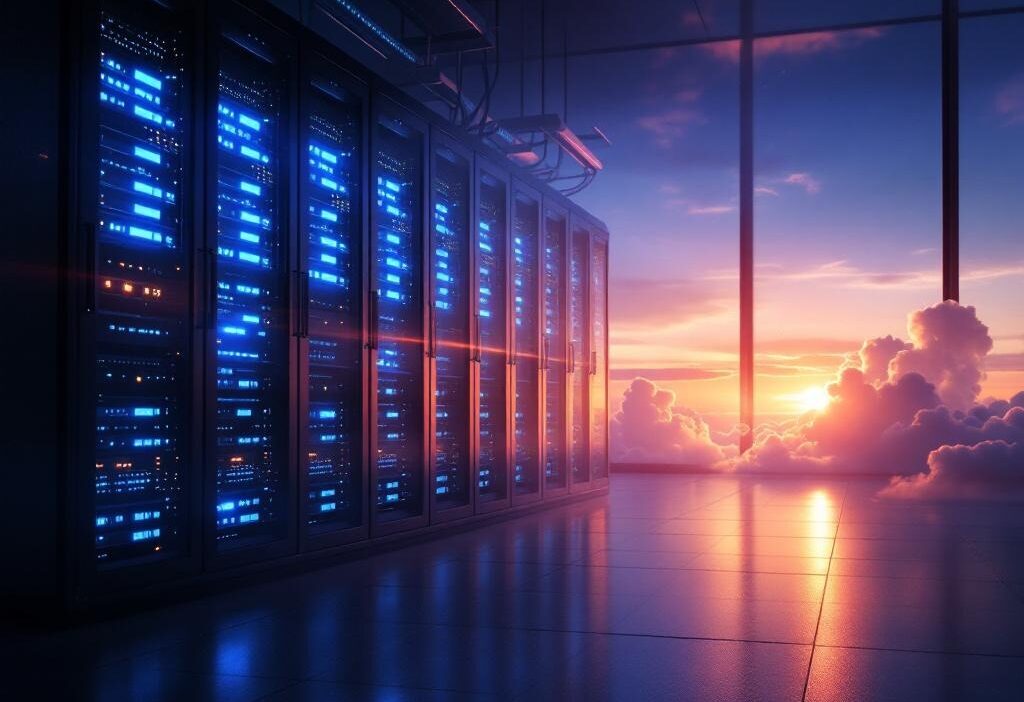The Side Effect Club: Stack Overflow Shuts Down Its Last Physical Datacenter
The Great Unracking in New Jersey: Farewell to Stack Overflow’s Last Physical Datacenter and a Lean Towards Sustainable Tech
Estimated reading time: 4 minutes
- Stack Overflow decommissions its last physical datacenter, moving to the cloud.
- Fusion energy presents a promising future for sustainable tech in data centers.
- Enhancements in developer experience take precedence in cloud migration.
- Tools like n8n and LangChain reshape the developer landscape.
- Future of tech shaped by cloud architecture and sustainable solutions.
Table of Contents
- One Stack, Zero Overflow: Shutting Down the Last Fortress
- Powering Up with Fusion Energy: The SUN Always Shines in Tech
- User Experience: A New Yardstick for Developers
- Tweetable Takeaways
- FAQ
One Stack, Zero Overflow: Shutting Down the Last Fortress
This is not just another shutdown – it’s a giant leap towards the future. Stack Overflow, the revered Q&A platform for legions of developers, just pulled the plug on their last physical datacenter in New Jersey. But don’t worry, your over-night code emergencies are not left unattended. They’ve gone virtual, shifting their humongous computing muscle to cloud-based systems. Think of it as Stack Overflow 2.0 – streamlined, efficient, and with significantly less metallic clatter.
Decommissioning physical datacenters and migrating to cloud infrastructure is no mean feat. Envision tools like n8n, a workflow automation tool, coordinating tasks and ensuring a seamless cloud migration journey. While Pinecone aids in making this cloud-based world full of intelligent applications and services, LangChain promises to translate the complexity of this process into clearer articulation.
Powering Up with Fusion Energy: The SUN Always Shines in Tech
In an exciting twist of events, Stack Overflow pulled us into a candid conversation with Realta Fusion’s CEO, who delved into the exciting and yet-to-be-explored realm of fusion energy. Fusion energy whispers a promise of cleaner and virtually limitless power — something our thirsty servers could definitely sip on.
While fusion energy might sound more Star Trek than coding, it’s a perfect fit in the tech industry’s blueprint for a sustainable future. The excitement is about harnessing the energy that literally powers the sun to keep our servers, data centers, and coffee machines running.
User Experience: A New Yardstick for Developers
In the journey to cloud computation and green servers, there’s “you” in the equation. It’s no longer just about achieving technical benchmarks; a core focus is now bestowed upon measuring and enhancing the developer experience. The idea is to find that sweet spot where technical efficiency and developer comfort meets, leading to better products, less burnout, and more of that “Look, Ma, no bugs!” feeling.
Tools such as n8n and LangChain are not only about boosting raw technical performance; they’re about crafting an environment that developers love to, well, develop in.
Tweetable Takeaways
- “Once a Stack, always Overflow: Last physical datacenter of Stack Overflow signs off, transitions completely to cloud. #StackOverflow #CloudMigration”
- “Future looks sunny with talks of fusion energy and sustainable tech at Stack Overflow. #FusionEnergy #SustainableTech”
- “Developer experience is the new black at Stack Overflow. Improved tools and environments on the horizon. #DevExperience #StackOverflow”
FAQ
Q: What is the significance of Stack Overflow transitioning to the cloud?
A: The transition marks a significant shift towards more efficient, scalable, and sustainable operations.
Q: How does fusion energy relate to tech?
A: Fusion energy holds the promise of providing cleaner and virtually limitless power, ideal for running data centers sustainably.
Q: What tools are facilitating this migration?
A: Workflow automation tools like n8n and services like LangChain are playing key roles in the cloud migration process.


















































































































































































































































































































































































